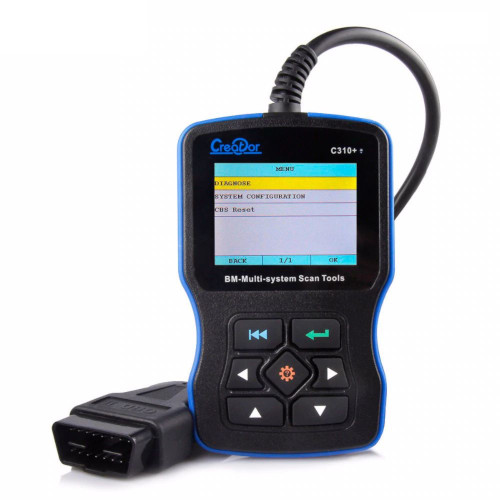A Draining Battery

Updated:

You used your van yesterday and everything was fine. Today, it won't start because the battery is dead. What happened?
First things first.
Everyone's done it.
Before you go looking for problems, check you didn't leave your headlights on overnight. Or your radio. Or some charger plugged into the lighter socket.
Ok, it's nothing like that. Something's up.
Here are some possible causes and ways you can test for them:
Battery / alternator problems
Your alternator should provided exactly 14.4v when the engine is running and all non-essential electrical systems are turned off. While you can get the Multimeter out and touch the probes on the battery terminals to check the battery voltage, a simpler and safer way is to buy one of those USB adapters with a voltage display. You can plug it in and immediately see the battery voltage without messing about.

Plug this thing in to see battery voltage with and without load.
The picture above is just to show the device. A standing voltage of 12.8 wouldn't have any trouble starting the engine. If you charge your battery with a mains charger, you can use this device to check the voltage periodically, after re-installing the battery in your van. The voltage will drop slowly for the first few hours after you disconnect the charger, but it should come to rest around 12.8v. If it continues to drop, you may have a problem with your battery. If it drops below 12v, you do. Below 11.2v, it's dire.
Assuming your battery is fine a few hours after charging, fire up the engine and see if you get the 14.4v you should get. If not, your alternator could be on the way out, or the connections could be bad; try cleaning them and check the cables for damage. Even if the alternator is to blame, it's possible that only the regulator on the back of the unit is faulty and the unit itself is fine. Have that checked before forking out for a new alternator.
Nothing wrong so far
Your battery and alternator are fine. Good. The next possibility is a cheeky short to ground. What that means is that somewhere, there's a wire that's touching bare metal or another wire, causing a short circuit and draining the battery. This could be anywhere and there are far too many wires in far too many difficult positions to be able to check them all. So it's time to start pulling fuses.
For this step, you will need your multimeter.
The procedure is:
1. Put your multimeter on the battery terminals, red on positive (+) and black on negative (-), using the 20v DC setting.
2. Turn the ignition to the first position and wait for 10 seconds. You should see a value somewhere between 0.3 and 0.1. When you see a higher number, like 0.6, you know something is draining power. The higher the number, the sooner your battery will be flat again.
3. Open your interior fuse box and pull out a fuse, then repeat the test.
When you finally see the number you were looking for (again, somewhere around 0.3, or even as low as 0.1), then the last fuse you pulled out disconnected the offending circuit. Looking at the fuse diagram in your owner's manual, you will be able to find out what that circuit is, and that should give you a good idea about where to start looking for the actual problem.
Let's say the radio circuit is to blame, as it once was on my van. Assuming the radio itself is not faulty, it has to be one of the wires connecting it to the van. Use a flashlight to inspect the wires. If you find an exposed wire, wrap it in insulation tape and run the test again. Chances are, that'll be your fix. If not, rinse and repeat.
If it's something more complicated, where you can't get to the wiring, or a circuit with electronic components that can't easily be tested, well, you might need to get expert help, but at least you know where to start, and that will save a lot of time and money - all those diagnostic fees will gobble your cash like your dad gobbles pistachios.
Sadly, just like you, your van is probably totally reliant on computers, and it's possible that you have software issues. In other words, if there are no physical problems, the on-board computer could have a problem that is causing it to keep something running that should be off. If that's the case, you may see a warning light on your dashboard, but with nowhere else to go, you will need a diagnostic tool. If you don't have one, it's off to ebay to pick up one of these little rascals:

An error code reader for your van.
This device connects to the OBD2 port under the steering wheel and tells you what's going on inside your van's computer. It'll show you errors and warnings and give you a good idea what needs to be fixed or reset.
There are many models available, from dirt cheap to big bucks. Most likely, the cheapish models will be good enough. Make sure you specify the right vehicle manufacturer, though. A BMW code reader isn't going to be useful on your Ford.
A cheaper alternative is to buy an OBD2-to-USB cable and download the ForScan tool free of charge from ForScan.org.

An OBD2-to-USB cable.
Public Comments
Posted by Burtman on
November 01 2024, 06:33 pm.

Posted by MikeyB_93 on
October 29 2024, 07:32 pm.
Is there a Mercedes version of this software? Old Sprinter. Don't want to spend the cash on the error code computer if I can avoid it.
Stay Up To Date





 Diving Deeper
Diving Deeper Read around 2,200 times
Read around 2,200 times For Everyone
For Everyone
Have a look at this page: https://www.mercedesmedic.com/best-obd-2-can-scanners-for-car-diagnostics/
I can't vouch for these, as I haven't used them, but it looks like there are options to explore.